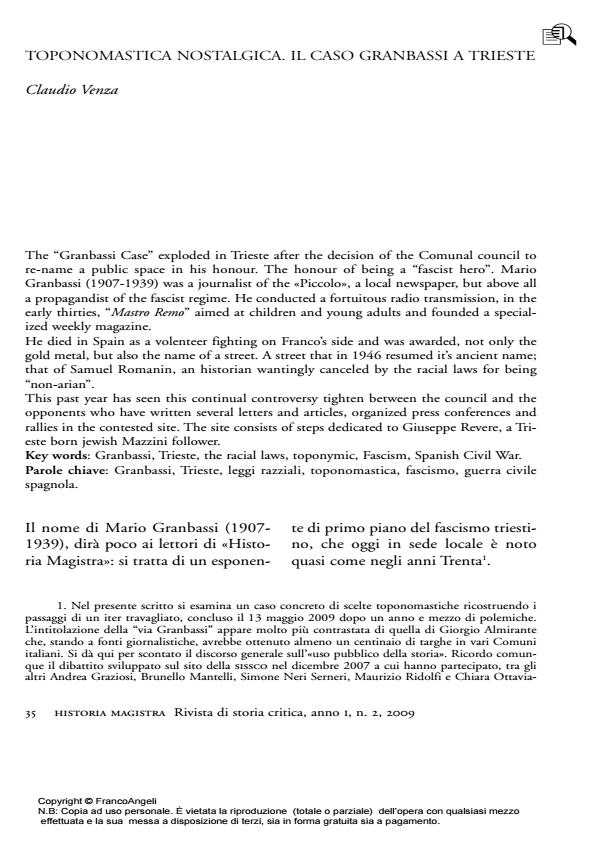Toponomastica nostalgica. Il caso Granbassi a Trieste
Journal title HISTORIA MAGISTRA
Author/s Claudio Venza
Publishing Year 2009 Issue 2009/2
Language Italian Pages 12 P. 35-46 File size 118 KB
DOI 10.3280/HM2009-002005
DOI is like a bar code for intellectual property: to have more infomation
click here
Below, you can see the article first page
If you want to buy this article in PDF format, you can do it, following the instructions to buy download credits

FrancoAngeli is member of Publishers International Linking Association, Inc (PILA), a not-for-profit association which run the CrossRef service enabling links to and from online scholarly content.
Toponomastica nostalgica. Il caso Granbassi a Trieste - The "Granbassi Case" exploded in Trieste after the decision of the Comunal council to re-name a public space in his honour. The honour of being a "fascist hero". Mario Granbassi (1907-1939) was a journalist of the «Piccolo», a local newspaper, but above all a propagandist of the fascist regime. He conducted a fortuitous radio transmission, in the early thirties, "Mastro Remo" aimed at children and young adults and founded a specialized weekly magazine. He died in Spain as a volenteer fighting on Franco’s side and was awarded, not only the gold metal, but also the name of a street. A street that in 1946 resumed it’s ancient name; that of Samuel Romanin, an historian wantingly canceled by the racial laws for being "non-arian". This past year has seen this continual controversy tighten between the council and the opponents who have written several letters and articles, organized press conferences and rallies in the contested site. The site consists of steps dedicated to Giuseppe Revere, a Trieste born jewish Mazzini follower.
Key words: Granbassi, Trieste, the racial laws, toponymic, Fascism, Spanish Civil War.
Parole chiave: Granbassi, Trieste, leggi razziali, toponomastica, fascismo, guerra civile spagnola.
Claudio Venza, Toponomastica nostalgica. Il caso Granbassi a Trieste in "HISTORIA MAGISTRA" 2/2009, pp 35-46, DOI: 10.3280/HM2009-002005